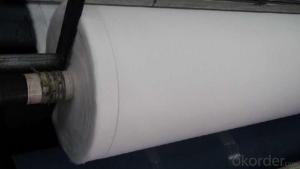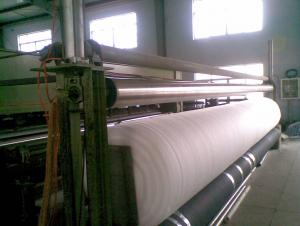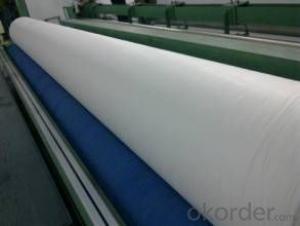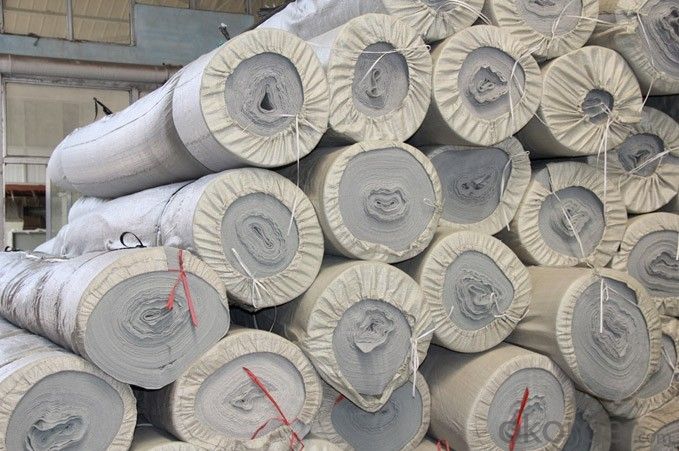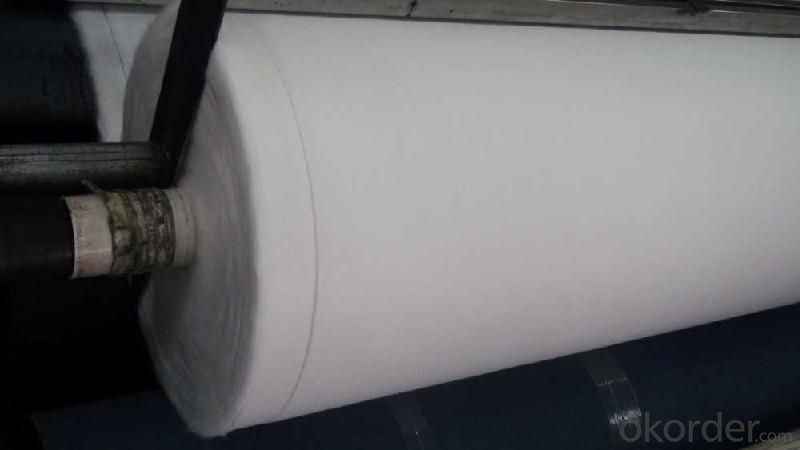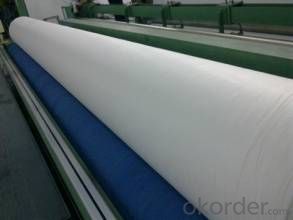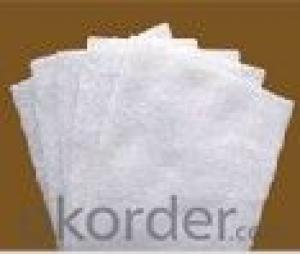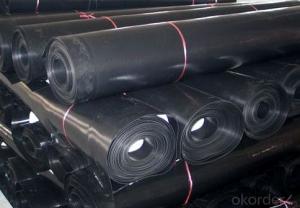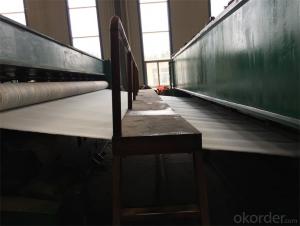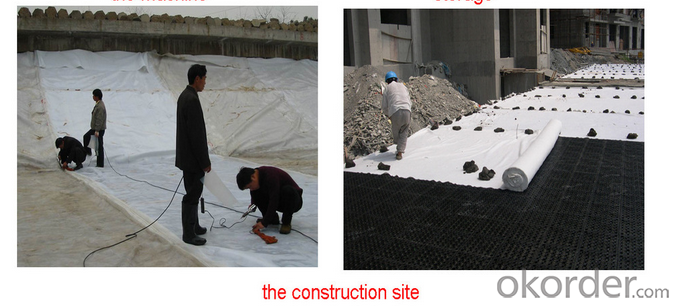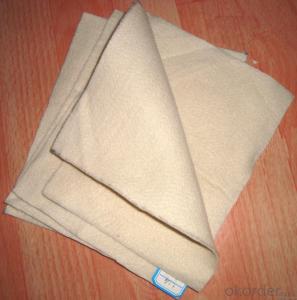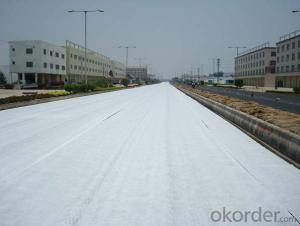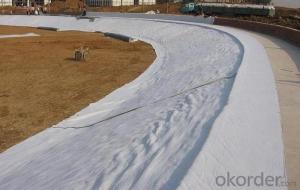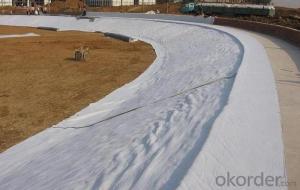Geotextile Truffaut Needle Punched Coconut Coir Fibre Sheet for Mattress or Geotextile (2024)
- Loading Port:
- Tianjin
- Payment Terms:
- TT OR LC
- Min Order Qty:
- 5000 g/m²
- Supply Capability:
- 100000 g/m²/month
OKorder Service Pledge
OKorder Financial Service
You Might Also Like
Specifications
hot sale needle punched nonwoven geotextile
1.Material:PP/PET
2.Weight:100gsm-1500gsm
3.Roll width:1m-8m
4.CE/ISO9001
hot sale needle punched nonwoven geotextile :
Product Description
1. Specifications
1) Weight / Mass: 100gsm - 1500gsm
2) width: Within 8 m
3) longth: 50-100m/roll (at request)
4) Material: PP / PET
5) Color: Black , white , grey
6) Certification: CE/ISO9001
7) Manufacturing method: nonwoven / woven
2. Features
1) Staple fibers needle punched non woven geotextile
The geotextile is made of polypropylene staple fibers on cross-laying equipment and needle punched equipment.
It owns the advantages of acid and alkali resistance, erosion resistance, aging resistance, large strength, stable size, good filtrability etc.
2) Filament non woven geotextile
Filament geotextile has features as follows: High strength, good capacity of elongation and high biology tolerance, alkali tolerance, acidity tolerance, weather resistance good filtration and fine drainage capacity etc. Also it is of low cost, easy in construction and use effects.
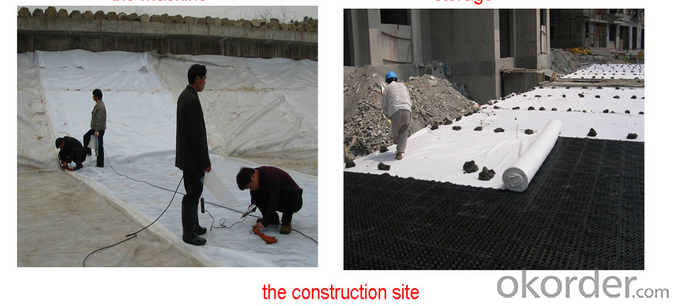
3. Geotextile Applications
1) Filtration :
The filtration layer of the dykes, river canal, seacoast, concrete slope, retaining walls. At the same time of preventing the clay granule from passing, it allows the water and the gas pass through freely.
2) Separation :
The isolation of the railway dregs and the roadbed, roadbed and the soft base, surface of the airdrome and parking lot and the groundsill, different dam materials. It isolates the soil and the gravel of two kinds different granule pathway from the groundsill or other buildings.
3) Adding muscle :
The highway, railway, soil-stone dam, breakwater, airport, backfill soil of retaining wall, slope protection, etc in which distributes the earth stress, prevents the side-displacement of the earth body and improves the earth body stability.
4) Protection :
It prevents the bank from being washed out, protects the bank and the bottom, prevents the water and soil from being washed away.
| PET continuous filament spunbond needle punched nonwoven geotextile(representative average data.) | |||||||||
| Test Item/Unit/No. | HY100 | HY150 | HY200 | HY250 | HY300 | Test Method | |||
| Mechanical Properties | |||||||||
| Tensile Strength | CD | kn/m | 4.8 | 8.3 | 10.9 | 14.5 | 18 | ASTM D 4595 | |
| MD | 7 | 12 | 14 | 18 | 22 | ||||
| Elongation at maximum load | CD | % | 65 | 64 | 63 | 62 | 61 | ||
| MD | 64 | 63 | 62 | 61 | 60 | ||||
| Grab Strength | CD | kn ≥ | 0.36 | 0.58 | 0.87 | 1.08 | 1.35 | ASTM D 4632 | |
| MD | 0.42 | 0.78 | 1.07 | 1.33 | 1.6 | ||||
| Grab Elongation | CD | % | 55 | 55 | 59 | 59 | 60 | ||
| MD | 50 | 50 | 51 | 51 | 53 | ||||
| Trapezoidal Tear | CD | kn ≥ | 0.16 | 0.23 | 0.31 | 0.39 | 0.46 | ASTM D 4533 | |
| MD | 0.245 | 0.31 | 0.42 | 0.46 | 0.55 | ||||
| Burst Strength-CBR plunger method | kn ≥ | 0.85 | 1.47 | 2.3 | 2.8 | 3.3 | ASTM D 6241 | ||
| Puncture resistance | n ≥ | 220 | 320 | 430 | 540 | 650 | ASTM D 4833 | ||
| Mullen Burst | Mpa | 1.2 | 1.8 | 2.3 | 2.8 | 3.3 | ASTM D 3786 | ||
| Cone drop resistance(hole-Φ)Dynamic perforation diameter | mm | 34 | 30 | 26 | 22 | 19 | BS EN 918-1996 | ||
| Hydraulic Properties | |||||||||
| Flow Rate,Q100 | L/s/m² | 200 | 210 | 180 | 150 | 140 | ASTM D 4491 | ||
| Permeability | cm/s | 0.48 | 0.43 | 0.39 | 0.36 | 0.34 | |||
| Apparent Opening Size O95 | mm ≤ | 0.13 | 0.12 | 0.12 | 0.11 | 0.11 | ASTM D 4751 | ||
| Apparent Opening Size O90 | mm ≤ | 0.12 | 0.11 | 0.11 | 0.1 | 0.1 | |||
| Physical Identification Properties | |||||||||
| Thickness 2KPa | mm | 1.1 | 1.3 | 1.8 | 2.5 | 2.9 | ASTM D 5199 | ||
| Mass per unit area | g/m² | 100 | 150 | 200 | 250 | 300 | ASTM D 5261 | ||
| Width | m | 2/3/6/ | 2/3/6/ | 2/3/6/ | 2/3/6/ | 2/3/6/ | |||
FAQ:
♦ Payment terms: by T/T or L/C |
♦ MOQ:2000 SQM |
♦ If you are interested in our products ,pls advice me the technical index,product weight etc,the more information the better..... |
- Q: Are geotextiles resistant to freeze-thaw cycles?
- Yes, geotextiles are generally resistant to freeze-thaw cycles. Geotextiles are designed to withstand various environmental conditions, including freezing temperatures and the subsequent expansion and contraction of soil during freeze-thaw cycles. Their properties, such as high tensile strength and durability, allow them to maintain their structural integrity and functionality in such conditions.
- Q: Long-term exposure to geotextiles on the human body what harm?
- No harm, Huazhi geotextile material answer
- Q: Can geotextiles be used in erosion control in stormwater detention ponds?
- Yes, geotextiles can be used in erosion control in stormwater detention ponds. Geotextiles are commonly used to stabilize and reinforce soil, prevent erosion, and filter water in various construction and environmental applications, including stormwater management. By placing geotextiles on the slopes and bottoms of stormwater detention ponds, they can help prevent soil erosion caused by the flow of stormwater, reduce sedimentation, and improve the overall effectiveness of the pond in controlling and managing stormwater runoff.
- Q: Can geotextiles be used in coastal protection?
- Yes, geotextiles can be used in coastal protection. Geotextiles are often employed as a part of coastal erosion control measures to stabilize sandy or loose soils. They can be used to create barriers that prevent erosion by filtering out sediment and allowing water to drain, while also providing reinforcement to the soil and preventing it from being washed away by waves and currents.
- Q: Can geotextiles be used in mining and landfill closure applications?
- Yes, geotextiles can be used in mining and landfill closure applications. Geotextiles are commonly used in these applications to provide erosion control, soil stabilization, and filtration. They act as a barrier to prevent soil erosion and help in containing mine waste or landfill materials. Additionally, geotextiles can improve the overall efficiency and safety of these operations by reducing the risk of environmental contamination.
- Q: Can geotextiles be used in soil erosion control on construction sites?
- Yes, geotextiles can be used in soil erosion control on construction sites. Geotextiles are permeable fabrics that can be placed on the soil surface to prevent erosion by stabilizing the soil and allowing water to pass through while retaining sediment. They are commonly used in construction sites to protect exposed soils from rainfall and runoff, reducing erosion and promoting vegetation growth.
- Q: How do geotextiles help with vegetation establishment?
- Geotextiles help with vegetation establishment by providing a stable and favorable environment for plant growth. They prevent soil erosion, control moisture levels, and create a protective barrier against weeds. Geotextiles also enhance the nutrient availability in the soil and promote root development, ultimately aiding in the establishment and growth of vegetation.
- Q: Does the geotextile filter cover the geotextile? Or impermeable geotextile?
- Geotextile has the role of anti-filter reinforcement, can not seepage, seepage is geomembrane, composite geotextile is also called composite geomembrane
- Q: How do geotextiles help with subgrade separation in pavement systems?
- Geotextiles help with subgrade separation in pavement systems by acting as a barrier between the subgrade soil and the overlying base and subbase layers. They prevent the mixing of these layers, which can lead to contamination and reduced structural integrity of the pavement. Additionally, geotextiles enhance the load distribution and drainage capabilities of the pavement system, improving its overall performance and longevity.
- Q: How do geotextiles help with soil erosion on slopes?
- Geotextiles help with soil erosion on slopes by providing a protective barrier between the soil and the forces of erosion. They are placed on the slope to stabilize the soil, prevent water runoff, and promote vegetation growth. The geotextiles allow water to pass through while trapping sediment, preventing it from being washed away. This helps retain the soil in place, reducing erosion and maintaining slope stability.
Send your message to us
Geotextile Truffaut Needle Punched Coconut Coir Fibre Sheet for Mattress or Geotextile (2024)
- Loading Port:
- Tianjin
- Payment Terms:
- TT OR LC
- Min Order Qty:
- 5000 g/m²
- Supply Capability:
- 100000 g/m²/month
OKorder Service Pledge
OKorder Financial Service
Similar products
Hot products
Hot Searches
Related keywords

